Spotlight on Authors
Five Questions with Lindy Mechefske
Five Questions with Lindy Mechefske, author of Ontario Picnics: A Century of Dining Outdoors
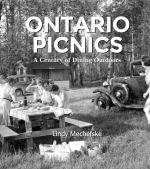
1. What inspired you to do the book Ontario Picnics?
We remember picnics. They stick with us in a way that other things don't. Maybe it's because the history of picnics is essentially the history of humankind and hence so imprinted upon us. Picnicking is a return to who we are as a species — we and our earliest primate ancestors have been eating outdoors for over 55 million years. It's really only relatively recently on the human evolutionary timeline that we stopped being nomads, formed permanent settlements, began to tend crops, and moved further and further indoors.
I wanted to capture the history of picnics in the province because I think we have continually underestimated the fundamental importance of both food and community. The two are so intertwined — as exemplified by many of the photos in the book — and yet the gap between them is growing.
2. How would you describe this book and what surprised you most about working on it?
I would describe this book first and foremost as a tribute to Ontario, a nod to our history, and to all the people who live here. But it is also a reminder of the beauty of Ontario, the joy of picnicking, and the importance of community. The book is primarily a collection of photographs of Ontarians picnicking or dining outdoors from the 1800s right through to the 21st century, often accompanied by short anecdotes about the images.
What surprised me most about working on this book was that after poring over thousands of historical images of Ontarians dining outdoors, I looked at Ontario through fresh eyes. I saw a charm and beauty that I'd forgotten or taken for granted. I fell back in love with Ontario. And I felt proud of the province. Of its magnificent lakes and rivers, of the boreal forest, the Canadian Shield, of our lovely parks, our cities, our history, and of the spirit of our Peoples — both the First Nations and Indigenous People of Ontario and all the waves of immigrants who have landed here and now call Ontario home.
When I combed through museums and archives around the province, hunting for picnic images, I began to feel as though I was finding the essence of Ontario — all these wonderful, beautiful images of people and communities gathered outdoors, eating and playing together. I found images of picnics held on pristine, wild lakefronts in a time before privately owned cottages occupied so much of the province's waterfront. I discovered beautiful, powerful images of Indigenous People, of new immigrants, of church and faith communities, and of entire villages gathering to eat and celebrate together on lawns, in parks, in forests, on lakefronts and riversides and on the banks of canals. I found a rich, complex history of a beautiful province before highways and developments sprawled in all directions. And I also found a welcome reminder of the spirit of the people who lived and continue to live in this vast and magnificent province.
3. With everything happening right now, why should people care about picnics?
Eating together is a fundamental human experience. But coming together in the midst of the global COVID-19 pandemic has been endlessly challenging and sometimes outright dangerous. Picnicking is one of the safest ways we can meet with family and friends and enjoy time together. I think picnicking is something of a salvation during the pandemic.
4. What would you like people to take away from your book?
I would like Ontarians to fall back in love with Ontario like I did when I was working on this book. I would like them to see the vastness and variety and beauty of this province — the cities, the forests, the parks and trails, the wilderness of northern Ontario, and the fact that Ontario's thousands of lakes and rivers comprise nearly one fifth of the global water supply.
But mostly, I'd like people to pack a picnic and gather up their nearest and dearest and spend some time outdoors, eating and talking and playing — and even more importantly, building community and memories.
5. Who was the greatest influence in your life?
Without a second's hesitation — I would have to say the greatest influence on my life was my paternal grandfather, Harry Sutcliffe, who lived in Yorkshire, England. I don't think I would have the love affair with food that I do if it had not been for him. He put such care into food — it was how he expressed love.
I spent a lot of time with my grandfather when I was young and he taught me very early in my life how to cook – how to shell peas, and knead bread, and roll pastry. My first picnics were with my grandfather. He put such care into packing the picnic hamper. Sometimes there were Scotch eggs, or sausage rolls, and sometimes egg salad sandwiches. There were small packets of potato crisps and nearly always chocolate biscuits. Plus a flask of tea and a bottle of lemonade. If it was warm out, we'd stop for an ice cream cone. All these decades later, when I think of my grandfather, what I remember is this: food, love, joy.
Five Questions with Amy Jo Ehman
Five questions with Amy Jo Ehman – Thelma: A Life in Pictures
1. What inspired you to do a book about Thelma Pepper?
My publisher, John MacIntyre, heard Thelma speaking on CBC Radio and thought she had such an interesting life that I should write a book about her. And I agree!
2. What do you think people can learn from Thelma?
Thelma's life story is a testament to the power of creativity and the joy it can bring to yourself and to others. She credits her long life (she's 100 years old!) to her passion for photography.
3. Thelma is your fifth book. What was it like to work on the project?
Thelma is my fifth book but the first biography, which is to say, the first time I worked so closely with another person who has a vested interest in the project. That was both wonderful and scary. I loved the challenge and the pleasure of spending time with Thelma. She has strong feelings about photography and she wasn't shy about sharing them.
4. What would you like people to take away from your book?
When you're down and sad and not sure what to do, remember what brought you joy as a child, find that creative spark deep within and you will find yourself.
5. Who was the greatest influence in your life?
There have been many influences but the first was the greatest — my mom and dad, who told me I could do anything and supported me through everything.
Five Questions with Kathleen Stitt and Linda Rafuse
Queens County, a History in Pictures by Kathleen Stitt, Linda Rafuse and Vernon Oickle
1. What inspired you to do the book about Queens County?
LINDA: Since 1929, the Queens County Historical Society has built a massive and unique collection of images, in various platforms, of our county and its people, from the inception of photography to present day. This has been through generous donations from private individuals, historians and local photographers. Now, in this digital age, we are given the opportunity to share a selected number of images from this valuable historical collection with our locals and their families, far and wide. Knowing how much people love to look at the "old photos" was all it took for inspiration for this book.
KATHY: The Queens County Museum has an amazing photographic collection. Our community over the years has been very generous donating many photographs, glass plate negatives, slides, postcards and negatives. These images tell our stories in our communities.
2. Why should people care about their history?
LINDA: I think at some point in every person's life, one wonders "where they came from" and no question, history provides that answer. It makes us aware of who we are today as a society and how the society we live in came to be. It gives us an understanding of our world both past and present. It's our legacy and continues to give us the strong foundation that we will add our own building blocks of history for future generations.
KATHY: These stories are important reminders of where we have been and our great resilience as a people. We had to adapt to our ever-changing world. Stories are important to share within our communities to give us a sense of pride and belonging. To newcomers to our area, these images provide context to the people of their neighbourhood. They are our collective memory.
3. This is your first book. What was it like to work on the project?
LINDA: It was an absolute pleasure for Kathy and I to work with Vernon on this project, working with the museum collection. It was a learning experience and we thank Vernon for teaching us all the processes and timelines involved in the making of a successful book from start to finish. What was the challenging part, you ask? To select from hundreds of photographs. Aside from that, this project was very gratifying.
KATHY: Queens County: A History in Pictures is my first book as author and researcher. The experience has been rewarding and challenging. Learning the creative process of "making a book" is much more complex than I ever expected. The hard decisions of who, what, where, when and why was made easier by working as a team. I wish to thank my fellow team members Vernon and Linda for the unselfish sharing of their respective wisdom and knowledge on our journey to publication. I would like to also thank Macintyre Purcell Publishing for their untiring support and patience. Their dedicated team has been with us every step of the way.
4. What would you like people to take away from your book?
LINDA: I would ask them to remember those first historians, the people who preserved this history and these images. Those early compilers, who put it all together for us, so that today we can continue their work for them. The professional photographers whose passion provided the visual for our history. Thanks to them the value of these historical images will always remain invaluable.
KATHY: I would like the reader to take away two things from this book. First, an increased respect of our communities and people. More importantly, I hope people take away the appreciation of the treasures they hold in their personal image collections. That box of old pictures in the basement. I understand that, at this moment in time, they may appear to have no value. I would like the reader to go into that box, look at those images, embrace those memories and preserve them for the future. Always remember, for future generations, those images will hold the same fascination for them as these images hold for us today. Go, build a glorious future on a solid understanding of your past.
5. Who was the greatest influence in your life?
LINDA: It was a privilege to grow up in a family with parents and grandparents that had a love for history and old photographs. They believed in handing down the old stories of family and communities. They often spoke of the importance of sharing the old photographs, knowing our families, our ancestors and where we came from. It started at a very young age and has never stopped.
KATHY: I believe the newfangled term is influencers. Who are mine? Both of my parents provided great inspiration to me. Their sense of community and a need to do good work was instilled in me at an early age. My father, Bill, showed me that creativity is a process that comes from study and hard work, My mother, Beverly, instilled in me that sharing your talent with others is not a burden or duty, it is a joy and privilege.
Five Questions with Stephen Ernst
Stephen Ernst, author of Lunenburg, a History in Pictures
1. What inspired you to do the book about the Town of Lunenburg?
Quite simply, I have been passionate about Lunenburg and Nova Scotia history all of my life. As a ninth-generation descendant of the settlers of Lunenburg, I have always felt a pride with this community. Whether as a child hearing the famous tales of the Bluenose, or the exciting adventures of my ship's captain grandfather, or today as I make my home and business in the town I love so well, Lunenburg has left a lasting effect on me, and it is my hope that my efforts to share some of the history and beauty show through with this book.
2. Why should people care about their history?
History is alive all around us. It is certainly not a distant array of facts found in the leaves of some dusty old tome, but a living, breathing vibrant entity that plays its part in past, present and future. History in Lunenburg stands on its own, as it still plays a crucial role in the town today. Many of the images found in the book show streetscapes and buildings that are largely unchanged over the years, and the viewer can easily gain a sense of the history this town offers by seeing the photographs in comparison to today. Lunenburg and history go hand in hand.
3. This is your first book. What was it like to work on the project?
To say it was a learning curve would be an understatement. I have always wanted to work on a book, and as a photographer and historian, this was an excellent way to combine the two. Even though I have studied Lunenburg history most of my life, research for this book taught me things that I did not know, which serves as a reminder that we never stop learning.
4. What would you like people to take away from your book?
Hopefully, they will see the pride in this town as is evident throughout the photographs, and is still felt today. Perhaps they will gain that extra curiosity that comes when they look at these ancient buildings and wonder what "front row seat" to the passage of time has been seen in these walls, and ideally, maybe that curiosity will leave a lasting effect, that reminds us all of the importance of preserving our past.
5. Who was the greatest influence in your life?
Influence is drawn from many places, and it is almost impossible to name any one, or even a group of people. For the purposes of this book, I must tip my hat to the people of Lunenburg who had the foresight to document the evolving history of the town, either through photographs and other forms of imagery, or through written documentation, so future generations can continue to learn the history of this storied town.
Five Questions with Lindsay Wickstrom
Lindsay Wickstrom, author of Book of Donair
1. What inspired you to write about food and, in particular, about donairs?
I have always been a food lover and a writer, and they gradually coalesced into food blogging. I backpacked across Canada in 2009, and I would say that this was the catalyst for my love of culinary history and regional foods. I developed this passion for learning about iconic foods in different parts of the world, and naturally, I wanted to showcase Atlantic Canada. The donair is the most notorious and symbolic food of Nova Scotia. It is a Canadian original and it deserves to have its story told.
2. What is your favourite donair story?
The last chapter of the book is a collection of submitted donair stories, but my favourite is probably Neil MacFarlane's epic tale of how he single-handedly conquered a Bash Toulany Rumble Party Challenge Donair. I can feel the grease and sweat just reading it!
3. Why do you think donairs are so popular?
I think it's that combination of sweet and spicy that captured the attention of the Maritime palate, especially at a time when food was predictable and one-noted. The donair would have been exotic, yet familiar. It resembles comfort food. Now the donair is a symbol of "home" and there is a certain nostalgia and hometown pride attached to it. At the end of the day, it is meat and bread. Everywhere in the world has its own version. Every city has its local delicacy or regional curiosity that locals keep close to their hearts.
4. Book of Donair is your first book. What was it like to work on the project?
I definitely felt like a food detective at times, and it was exhilarating to unravel the mystery. I would discover groundbreaking, narrative-shattering information and it was a rush. It was also incredibly tedious, and seemed impossible at times. I wanted the book to be fun and entertaining, but still informative and well researched. I had to find that balance and find my voice.
5. Who was the greatest influence in your life?
Probably my Dad, if I'm being honest. He's actually a bit of a researcher, himself, in his retirement! My family has always liked dining out together, and restaurants have become my "happy place". Anthony Bourdain is my "food hero", though. That is my dream job: traveling, eating and contemplating the world.
Five Questions with the authors of Lethbridge: A History in Pictures.
Five Questions with the authors of Lethbridge: A History in Pictures.
Belinda Crowson
1. How did you get interested in the history of southern Alberta?
I can't remember a time when I wasn't interested in local history. We always had local history books at home and we discussed and debated local history as a family. I was just delighted as an adult to find the Lethbridge Historical Society where I can get together with like-minded people and continue the conversations around this topic.
2. How has Lethbridge been shaped by its history?
When I fully and completely understand this question, that will be the time to stop my researching and writing into local history. That's one of the reasons I do what I do — trying to understand the why and how behind the Lethbridge and southern Alberta of today.
3. Did you learn anything when you researched this book that you didn't know about Lethbridge before you started?
While I didn't learn any new facts while working on the book, my greatest learning came from the collaboration with the different writers. The various perspectives the four of us brought to the table made for in-depth and fascinating discussions about what had to be included in the timeline, what themes had to be covered, and what pictures needed to be shared.
4. What is your favourite photo in the book and why?
So very difficult to pick just one, but I would say the 1947 photograph of the students marching down 13 Street North as part of the protests against rising chocolate bar prices. Children and kids' stories often don't make it into history books but if we look deeper, there are amazing stories, such as this one of children getting organized and fighting against what they considered an unjust change. A great story and a compelling photograph with which to tell the story.
5. What are some of the things that the Lethbridge Historical Society does besides managing a popular Facebook group?
Just as the history of this area is wide and complex, so are the activities of the Lethbridge Historical Society. The Facebook page, while well-known, is just a part of the work of the Society, including:
** published over 50 books on local history over 50 years (and the list continues)
** publishes a bi-monthly newsletter for our members
** offers programs to members and the public including tours, presentations and lectures
** advocates for local history. Members of the Society sit on several committees to provide heritage knowledge and to ensure historical concerns are part of decision-making
** supports local residents and businesses with historical research. Partnered with several organizations to provide research and knowledge for their projects
** developed a historical plaque program that tells the stories of buildings, sites and events. While many of our plaques are in Lethbridge, the LHS has plaques from the Livingstone Gap to Bow Island
** as a chapter of the Historical Society of Alberta, we work with other chapters and like-minded societies across the province to promote history provincially
While the above is part of the work of the LHS as a Society, individual members are continually researching, documenting and writing about local history and leading a variety of projects.
Bobbie Fox
1. How did you get interested in the history of southern Alberta?
I have always been interested in the history of any kind but it wasn't until I moved back to Lethbridge after living in Victoria, BC, that I was able to truly appreciate southern Alberta's history.
2. How has Lethbridge been shaped by its history?
Lethbridge has become home to so many different cultures. These ethnic influences have made Lethbridge the city it is today.
3. Did you learn anything when you researched this book that you didn't know about Lethbridge before you started?
I learned that Lethbridge's first electric company in 1893 was privately owned.
4. What is your favourite photo in the book and why?
Don't have one.
5. What are some of the things that the Lethbridge Historical Society does besides managing a popular Facebook group?
We publish history books, have a historic plaque program for heritage properties, provide historical tours of downtown and different Lethbridge neighbourhoods.
Lorien Johansen
1. How did you get interested in the history of southern Alberta?
Quite by accident. I was invited to join the LHS by my close friend and co-author Bobbie Fox. I thought I would try it out for a year, and somehow, suddenly, it's four years later. I've always had a love for history, and the more I've learned about the local history, the more fascinating I find it.
2. How has Lethbridge been shaped by its history?
Every city is shaped by its history, and in Lethbridge today there is still a very deeply ingrained connection to the land, and the working of it. It's been coal mining, and brewing, and agriculture, and at its core, Lethbridge is still those things. Perhaps the processes have been refined and streamlined, and there's an arts and culture gloss on it, but this city will always be some version of what it started out as.
3. Did you learn anything when you researched this book that you didn't know about Lethbridge before you started?
I learned many things, and the one that immediately pops to mind is the steamboat that travelled the river between Lethbridge and Medicine Hat. I had no idea it ever existed.
4. What is your favourite photo in the book and why?
It's hard to choose, but my favourite in this book is the image of the J.D. Higinbotham building, before the installation of the clock. This building is one of the three most iconic images that represent Lethbridge, and the fact that I can go right up into that same clock tower today lends such dignity and longevity to the building.
5. What are some of the things that the Lethbridge Historical Society does besides managing a popular Facebook group?
We host fun and informative walking tours, and monthly meetings with guest speakers on a wide variety of topics; we work on other committees and councils to preserve and promote our historic sites; we publish books and papers; we are always researching something or another, whether that's for our own projects or for members of the public as requests. Above and beyond all of these things, we are individuals, with jobs and lives and families, and we are residents of Lethbridge.
George Kuhl
1. How did you get interested in the history of southern Alberta?
My family has history in southern Alberta going back to 1909 when my father's parents immigrated to southern Alberta from the United States. My father, my family, and I were all born and raised in southern Alberta. The Kuhl family is one of many families profiled in "Under Eight Flags," a history of Milk River and District. My great-grandfather, on my mother's side, was a barber who immigrated from Ireland and owned a barbershop in Waterton in the 1920s – 1930s. These deep family roots have been a contributing factor in learning more about Southern Alberta.
In addition, I was a Registered Professional Planner and provided community development advice to the City of Lethbridge as well as several southern Alberta municipalities for over 40 years. Helping these municipalities manage growth and change required me to learn a lot about local history and has given me a unique perspective from which to observe many milestone events.
2. How has Lethbridge been shaped by its history?
Lethbridge has been shaped to a great extent by its geographical location and the development and use of the natural resources both in the City and its surrounding region. It has also been shaped by its people, including the Indigenous Blackfoot who have inhabited the area for over 10,000 years. Lethbridge has seen waves of immigrants who, in the early days, came here for opportunities in mining, the railroad and agricultural but also with the expectation of making better lives for their families. In more recent times, advanced education and technology, available through the Lethbridge College and the University of Lethbridge, have been tremendous influencers to the city.
3. Did you learn anything when you researched this book that you didn't know about Lethbridge before you started?
I was surprised at the roles and extent that aeronautics both domestic and military, has had and continue to have on the City.
4. What is your favourite photo in the book and why?
My favourite photo in the book is of the steam boat on the Oldman River, when it was actually possible to sail from Lethbridge to Medicine Hat.
5. What are some of the things that the Lethbridge Historical Society does besides managing a popular Facebook group?
The LHS is active in: promoting the writing of the "stories" of Lethbridge and southern Alberta; leading historic community tours; participating in community events through book sale kiosks; providing advice and leadership in City of Lethbridge Committees such as the Heart of Our City (downtown revitalization) and the Historic Places Advisory Committee; providing information to community members who are interested in local history; and actively participating in the Historical Society of Alberta.
Five questions with Sherman Cahal, Adam Paris and Michael Maes, authors of Abandoned Kentucky
1. Your Facebook page Abandoned Kentucky is very popular. What made you decide to do a book featuring images of abandoned places from throughout Kentucky?
Sherman - Steve McManus, the founder of the “Abandoned Kentucky” Facebook group, reached out to me inquiring about the possibly of having a book published of abandoned locations in Kentucky. As my work mostly focused on the central and eastern parts of the Commonwealth, I requested the collaboration of Adam Paris and Michael Maes as they have photographed a considerable number of places in the western and south-central reaches of the state.
2. What is the hardest you ever worked to get a perfect shot?
Adam – Industrial locations are the hardest locations to work with, but the most satisfying and intriguing. The most intense location I’ve photographed is a multi-story industrial plant dating back to the late 1930s. Due to obvious reasons, wearing a respirator in the middle of summer made for a long and very hot day, especially climbing many stairs and having to bring extra lights to light paint dark areas and rooms. It was worth the trouble, and I would do it again in a heartbeat.
Sherman – Many years ago, I spent several hours hiking through dense woods, across several streams, and across marshy land to explore Old Crow and Old Taylor distilleries. It was worth the hike to get to the site but I was too exhausted to make the return trip. As I started to walk the road back to my parked car which was several miles away, a gentleman came by in his pickup truck and offered a ride.
Michael – One that comes to mind is an ice factory in Louisville. I was supposed to explore with a group of friends but I didn’t make it so I had to go on my own. I had to jump several fences, and the location was mostly dark. It was challenging to walk through with only the light of my phone, not to mention all the unfamiliar sounds. I spent four to five hours there alone, something I don’t recommend doing. It was scary!
3. The lighting in your photographs is incredible. Do you ever use flashes or is it all natural light?
Adam – Almost all of my images are done with a tripod and natural light. Most interior scenes usually have difficult lighting situations, so most will be bracketed exposures put together to make high dynamic range (HDR) images. In extreme situations, flashlights are used for light painting.
Sherman – Most of my photos are composed with just a tripod and natural light. Like Adam, most of my interior scenes include exposure bracketing to ensure that as much detail is captured as possible and to correct for any severe underexposure or overexposure of the photograph. For certain scenes, such as tunnels, a high-intensity LED discharge lamp will be used to illuminate the scene.
Michael – I shoot handheld with no tripod or flash. I am more of a run and gun photographer, meaning I am interested in getting in and out quickly. Whenever I’m on location, I am looking for dramatic lighting combinations. I return to locations several times looking for perfect lighting.
4. Is there a Kentucky photo you're still hunting for?
Sherman – I am still seeking out that quintessential Kentucky icon: bourbon distilleries, as they represent both a decline and rebirth of an industry staple.
Adam – I'm very interested in preserving commercial and industrial locations through photography. In Kentucky, for example, I hope to become a resource for photographing idled or decommissioned power plants.
Michael – I am looking for a grand estate that has been untouched for years.
5. What is it about abandoned places that keeps drawing you back to photograph them?
Adam – For me, it’s about combining photography with my passion for documentation and historical interest. At an abandoned school, I envision who roamed the halls and what they’re doing now. In an old abandoned home, I wonder about what conversations were had in a living room or who sang around a decaying piano. In a factory, I imagine the men and women who worked there on a daily basis.
Sherman – My passion is as much photography as historical research. It’s always fascinating to uncover the history of a location and to be able to share that information with a broader community of like-minded people. With so much knowledge lost to antiquity or regulated to difficult-to-access archives, there is a treasure trove of information awaiting discovery.
Michael – The drive to a location that I have not yet discovered brings the excitement of the search to find a hidden gem that no one has photographed.
Five questions with Doretta Groenendyk, author of Groundhog Night: Shubenacadie Sam’s Shadow.
1. What attracted you to this subject?
I went for an autumn walk in Shubenacadie Park near sunset and loved seeing how the light changed the mood of the park; it glowed as the sun was setting.
Imagining this community of animals experiencing seasons from the point of view of a curious groundhog made me feel curious as well. I wanted to share that with young readers and people who visit the park.
2. Where did you find inspiration for the story and images in your book, especially for Shubenacadie Sam?
Winter was my inspiration. While I was creating wintry scenes for this book I was pretty much living in snow. I am an avid cross-country skier and love to pond skate. When I spend a lot of time in nature I can feel small, like maybe how a groundhog must feel. At the same time, when I am outside a lot, I start to notice small details like snow on berries and the tracks of mice on snow.
3. What special process or routine do you follow when you are creating a book like Groundhog Night: Shubenacadie Sam’s Shadow?
I visited the park and took many photos and talked to people at the park about the animals and life there. I researched the different animals and practiced drawing them. I wrote the story many times in different ways until I found a voice that seemed to connect to both the park and to Sam. I then created a storyboard which mapped out the illustrations with the text. After that I painted the large images, one by one, including the cover.
4. What is it about Shubenacadie Sam that attracts young people?
Sam is a groundhog who is famous for just being a groundhog. I think young people like that an ordinary groundhog can be part of something as big as the arrival of spring.
5. What message would you like young people to take away from this book?
To explore, to ask questions, to enjoy their natural surroundings and to experience nighttime outside!

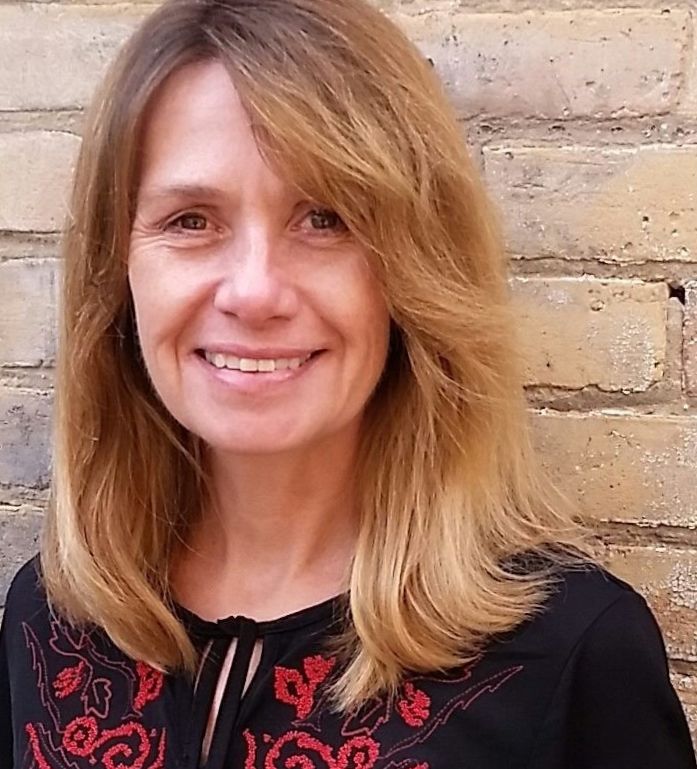
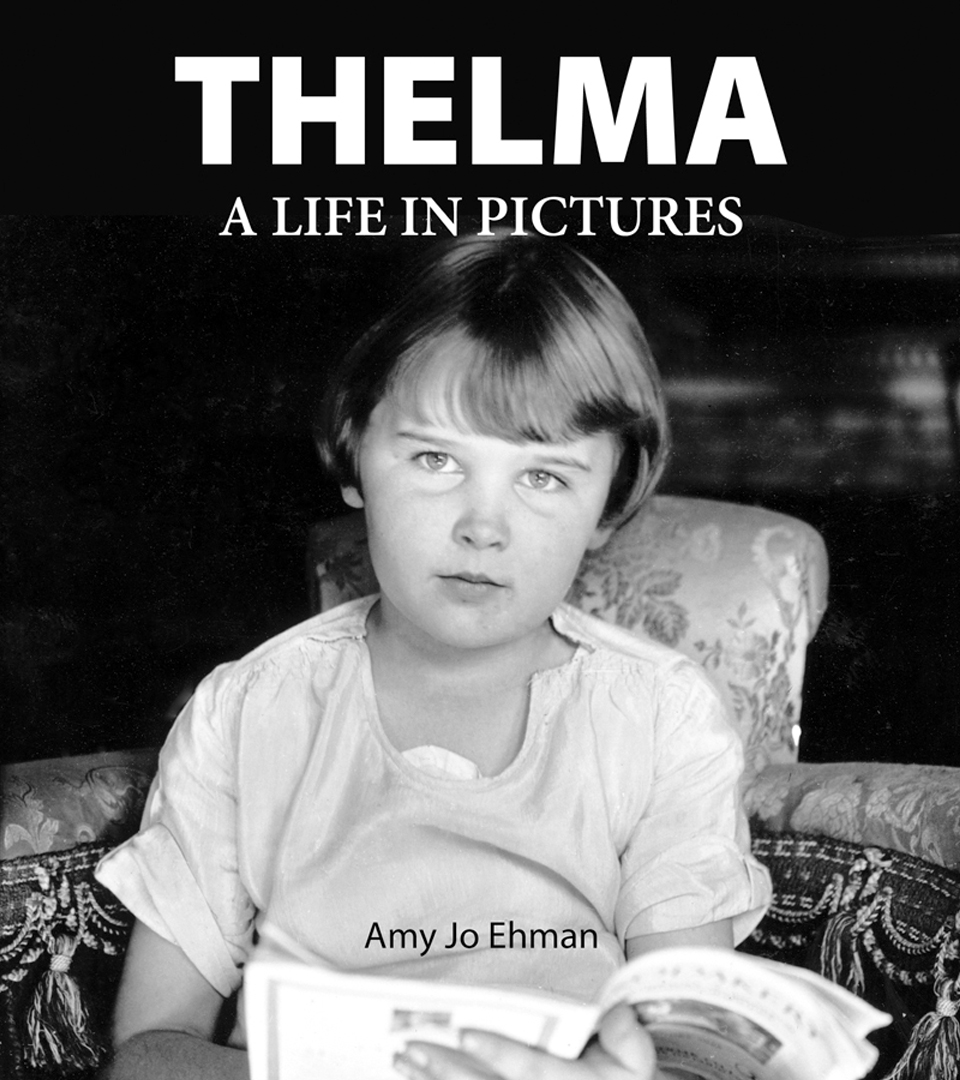
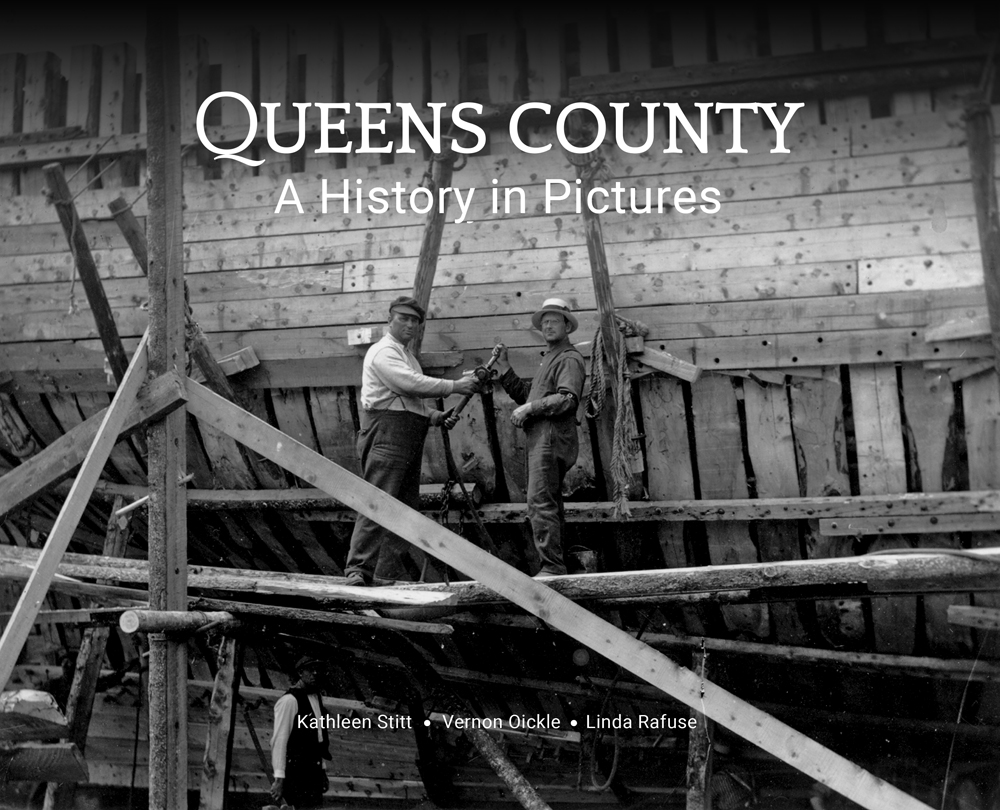
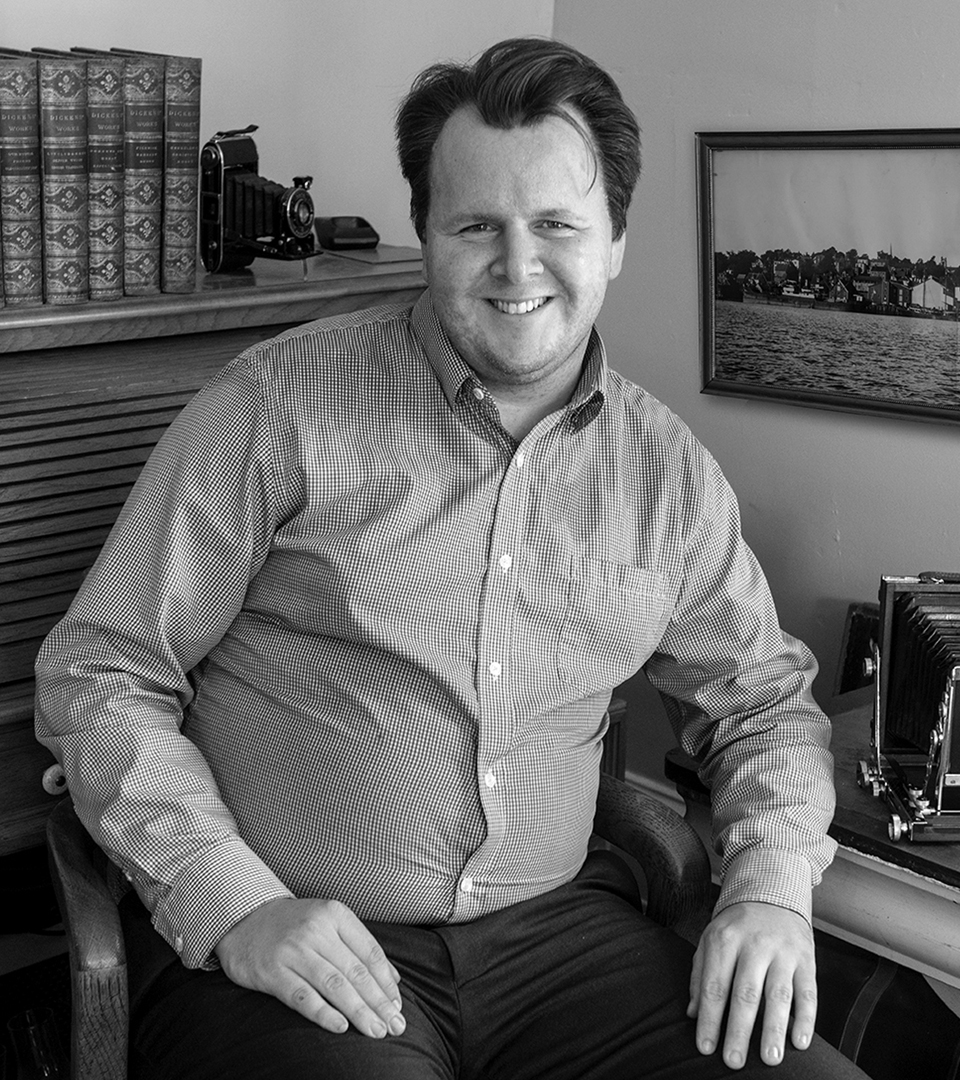
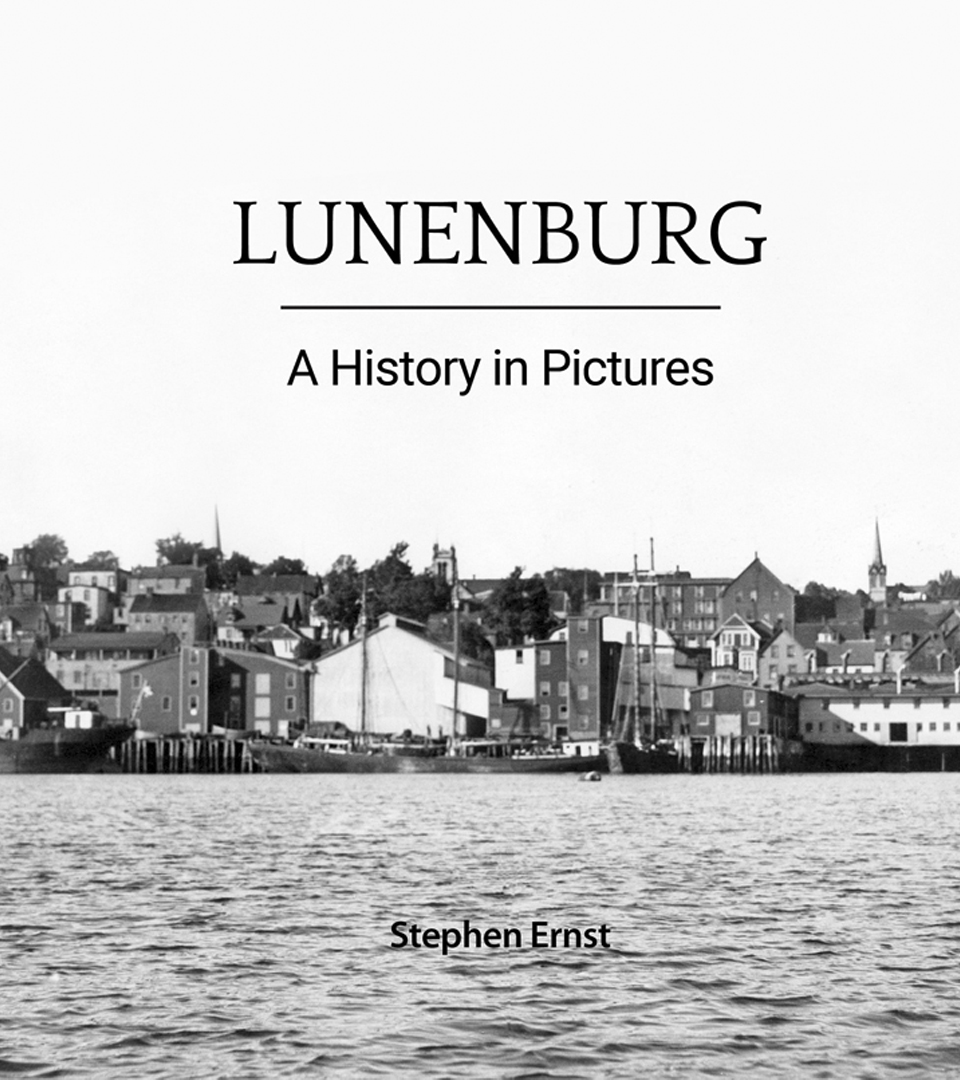
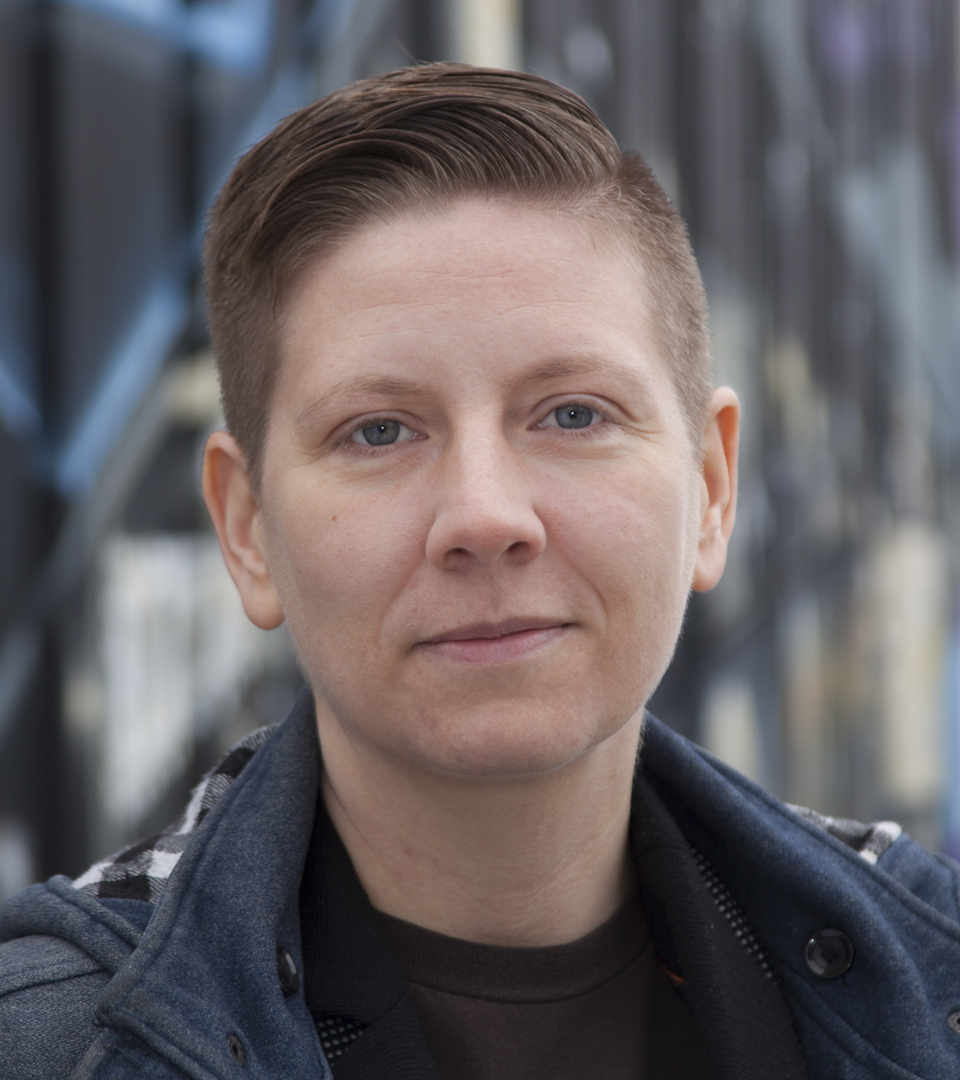

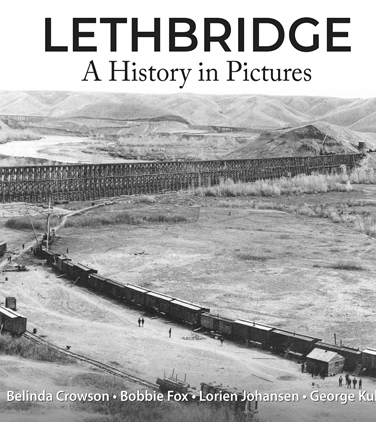
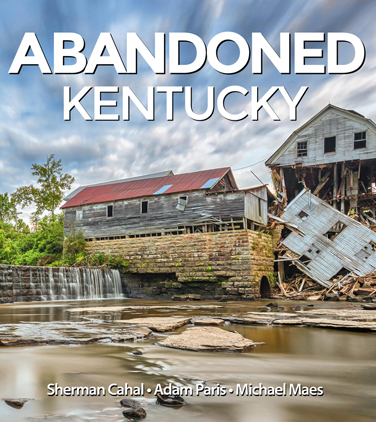
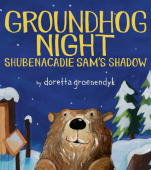

Follow Us!